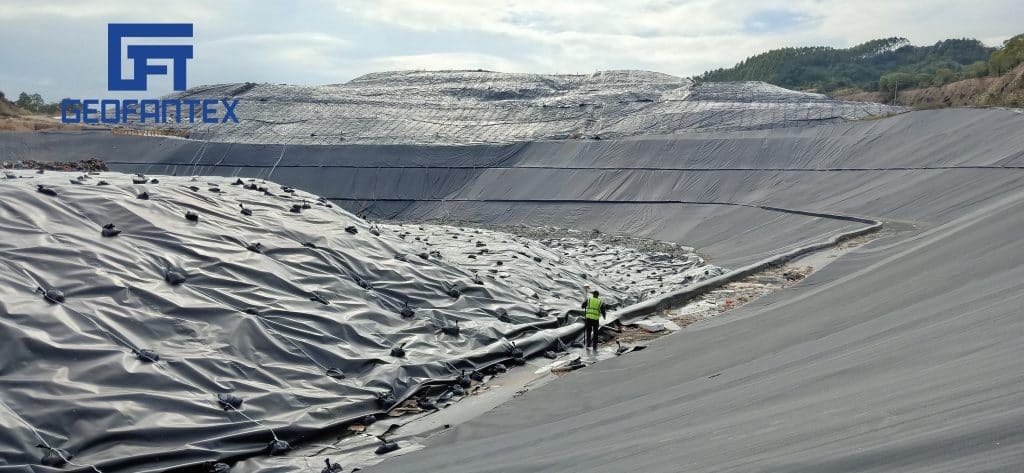Geotex 351 – Nonwoven Geotextile Fabric – 15′ x 360′
Share this:
Share on Facebook Tweet on Twitter Share on LinkedIn Pin on Pinterest
Geotex 351 is a nonwoven geotextile fabric that is made from high-quality polypropylene staple fibers that is needle-punched to form a dimensionally stable fiber network. This fabric meets AASHTO/NTPEP standards.
PRODUCT HIGHLIGHTS
- Requires less aggregate during construction saving $50,000 per lane mile on average and reducing road thickness
- Separates aggregate from soil, doubling the useful road life
- Provide superior hydraulics and soil retention to support filtration
- Mitigates dust in unpaved roads
- Provides cushioning and protection for critical lining systems
- Resists biological and chemical environments normally found in soils
- AASHTO/NTPEP Certified
- Reduces overall maintenance cost, saving up to 50% on road repairs
- Use less natural resources – 1 truck of geosynthetic rolls = 850 truckloads of stone
- Installs faster than traditional methods reducing overall construction time

Product Data Sheet
Install Guide
Nonwoven Sell Sheet
Benefits of Nonwoven Fabric
Geotex Products Available:
FREQUENTLY ASKED QUESTIONS
Questions about our this product? Visit our FAQ section here.
Geotex 351
Non-woven polypropylene geotextiles are made from staple fibers used for soil separation and drainage and generally for subsurface drainage and filtration applications such as French drains, blanket drains, and trench drains. They are high highly durable and possess excellent physical and hydraulic characteristics. The GEOTEX 351 Non-woven geotextile is appropriate for multiple uses in the landscape. It keeps soil in place while allowing water to pass through. It’s very long-lasting and permanently controls erosion when used behind retaining walls and banks.
Nonwoven Geotextile Characteristics
- 100% Polypropylene Fibers
- Needle-Punched Design
- Rot-Resistant Fabric
- Durable Construction & Design
- Filtration & Drainage Applications
- Multi-Strength
This fabric can be used in a variety of applications depending on its weight. Lightweight geotextiles like 4 oz are used for drainage and landscaping and are often used for asphalt overlay to prevent cracking in the asphalt. It can also be used as layer support.
Medium weight geotextiles like 6 oz or 8 oz can include stabilization, erosion control, and drainage projects. Nonwoven geotextile fabrics are used around French drains and subsurface drains to filter out silt and allow water to flow through.
Heavyweight nonwoven geotextile fabric like 10 oz is used in projects that require a lot of weight like road stabilization and geomembrane cushioning.
Even though nonwoven geotextile has a lower tensile strength than woven, it still offers excellent strength, durability, and great drainage properties. Nonwoven geotextile is like felt fabric made by thermally bonding polypropylene or mixing polypropylene and polyester fibers than using needle-punching and other processes.
This geotextile fabric is easier to cut, has a high water absorbency rate, and will not lose strength over time which is the same as woven fabric when below ground. It makes this nonwoven fabric perfect for use beneath driveways and roads. It’s perfect for land and stormwater drainage systems for long-term ground stabilization and filtration which is mandatory.
Understanding Nonwoven Fabrics
The primary objectives of a nonwoven geotextile fabric are separation, filtration, and drainage. The manufacturing of these fabrics involves needle-punching versus weaving. Nonwoven fabrics are referred to by weight (x ounces per sq yard) and feel and look more like felt. They offer absorbency and are often used in applications where drainage and filtration are involved.
Instead of weaving fabrics together on a loom, nonwoven geotextiles are manufactured by bonding materials together through chemical or heat, needle-punching, or another process. They are made of synthetics and are used in filter or separation projects. Nonwoven geotextiles typically are not a good choice for stabilization or reinforcement projects. You will usually find them protecting geomembrane lining systems from interior and exterior penetrations.
The nonwoven geotextile will break down much faster than its woven counterparts. That said, for projects where pooling water is a major problem, nonwoven geotextiles are a perfect choice.
